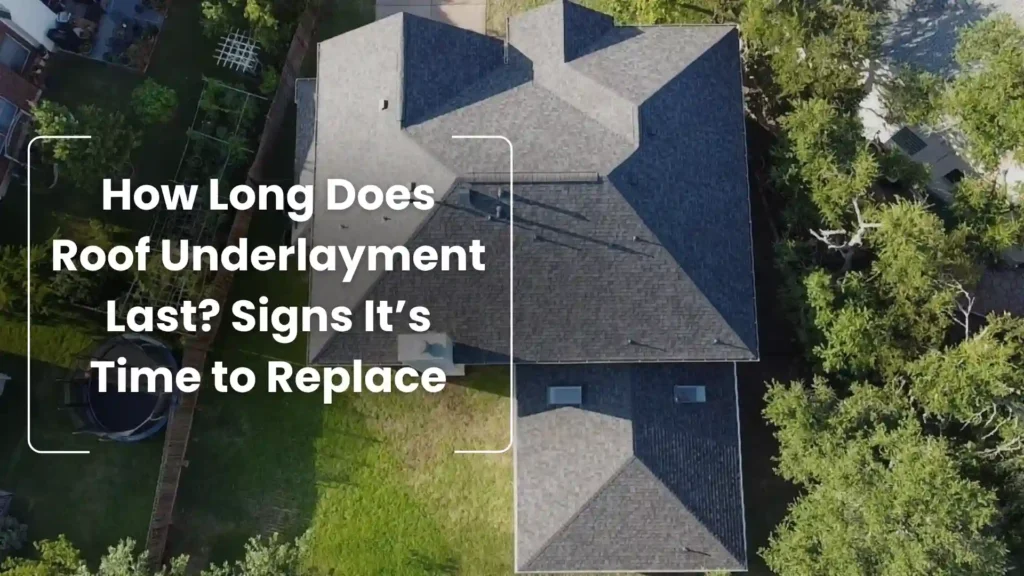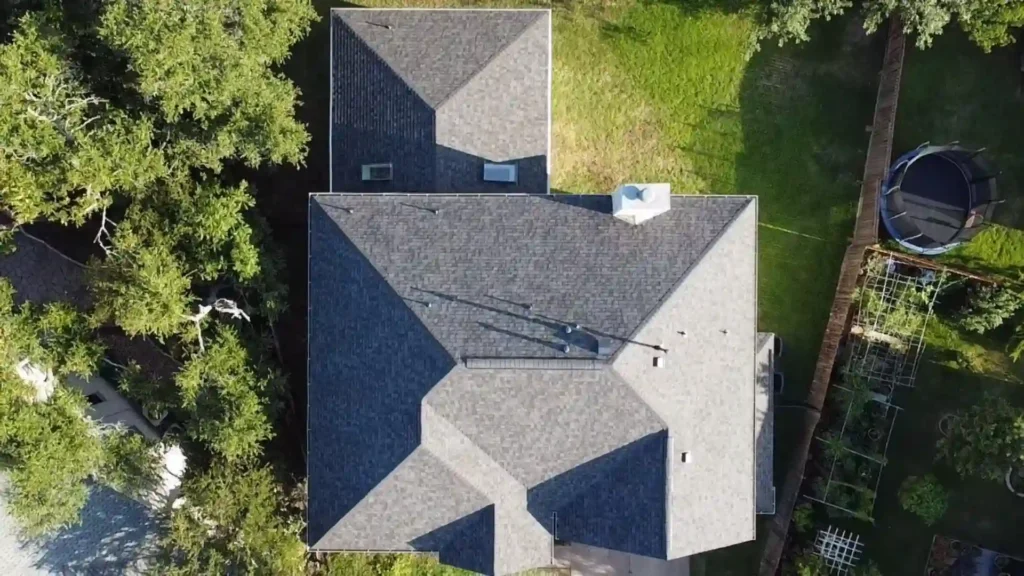How Long Does Roof Underlayment Last? Signs It’s Time to Replace


At RoofsOnly.com, we help homeowners understand the integral role their roof’s underlayment plays in protecting their homes. We can also help individuals identify the tell-tale signs that it is time for a replacement.
What Is Roof Underlayment and Why Is It Important?
Roof underlayment is the layer of the roof sandwiched between shingles and the roof sheathing or roof deck. It is an essential protective layer that helps safeguard a home from moisture, wind, and long-term structural damage. Most roof underlayment is made from felt, rubberized asphalt, or synthetic materials and gets rolled out over the entire surface of the roof deck before shingles or other roofing materials are installed.
Roof underlayment is crucial for several reasons, including:
- Providing a Secondary Moisture Barrier – Underlayment is another level of protection against the elements. It is a backup moisture barrier to help prevent water from reaching a home’s wood deck or interior.
- Protects the Roof During Installation – Underlayment doesn’t just protect the roof when completed. It helps protect a home’s entire roof and interior from water damage during installation.
- Shields the Roof from Wind-Driven Rain – High winds can cause rain and moisture to blow under shingles. With a properly installed underlayment, water cannot seep into attics or living spaces.
- Extends the Lifespan of the Roof – This protective layer also contributes to extending the roof’s life by helping to prevent rot, mold, water damage, and premature failure of other roofing materials.
Roofing underlayment is also crucial because many municipalities require an underlayment to meet local building codes. Austin codes require roofing underlayment for most projects. Without an underlayment, some shingle manufacturers may also void warranties.
How Long Does Roof Underlayment Typically Last?
Although it’s not visible once a roof gets completed, the underlayment protects your most significant investment: your home. The lifespan of the underlayment depends on several factors, including the material it is made of and the conditions of the area where you live. Inadequate ventilation, intense UV exposure, and installation quality can all impact its longevity. Typical lifespans of underlayment are:
- Asphalt-Saturated Felt – Asphalt-saturated felt is one of the most traditional materials used as underlayment. This material, called tar paper or sometimes felt paper, contains an organic mat saturated with asphalt to create a water-resistant barrier. It can last 15 to 20 years.
- Rubberized Asphalt – Rubberized asphalt goes by several names. Sometimes referred to as peel-and-stick or self-adhesive, it combines asphalt and rubber polymers. It creates a better waterproof seal than traditional felt, especially in leak-prone roofing areas like eaves, valleys, and around chimneys and skylights. It generally lasts between 25 and 40 years.
- Synthetic Underlayment – Synthetic underlayment is a relatively new and lightweight material, typically made from multiple layers of polymers woven together. Durable and more UV-resistant than felt, it can last 25 to 35 years, with some premium manufacturers claiming the lifespan can be up to 50 years.
Roof Inspection Tips for Homeowners

- Leaks or Water Damage – Leaks or visible water damage in your attic or other areas of your home may suggest that the protective underlayment barrier is damaged or deteriorating.
- Signs of Mold or Rot – Mold, mildew, or rot in your home’s attic or other areas is another potential sign of underlayment failure. Mold behind walls may not be visible, but a musty smell or damp insulation can indicate mold or rot issues.
- Water Collecting in Valleys and Eaves – Pooling or leaking in roof valleys and eaves stresses the underlayment. If you notice leaks or ice damming in these areas, the underlayment could be failing or degraded.
- Shingle Damage – Warped, buckling, or otherwise damaged shingles may indicate problems behind the surface. Shingles need a dry and stable surface to remain flat against the roof. Buckling or warping may be signs that the underlayment is failing or saturated.
- Visible Underlayment – One of the most obvious signs of a problem is visible underlayment. The underlayment is the layer between the roof deck and the shingles. If you can see this layer, it is exposed to water and UV rays, which can rapidly break down the integrity of the product and reduce its effectiveness.
Regular roof inspections are essential for keeping your home safe, helping to prevent costly repairs, and extending the life of your underlayment and roof. Take time to inspect your roof from the ground several times yearly. Look for loose, missing, or warped shingles, exposed nails, flashing, or underlayment. Keep gutters clean to help prevent clogs and allow water to drain from the roof correctly. Finally, always inspect your roof after significant weather events, looking for leaks and signs of moisture.
An Austin Residential Roofing Expert Is Here to Help
Your home’s roofing underlayment doesn’t last forever. However, the right materials and expert installation can provide you and your family with decades of safe and reliable performance. The experienced Austin roofing team at RoofsOnly.com can repair or replace your damaged underlayment and help you choose materials that can withstand Austin’s intense weather.
Contact our office today and request a free quote. With unparalleled customer service and skilled craftsmanship, we want to get your roofing project off to an exceptional start. Let’s sit down and discuss your situation and help you understand your options. We look forward to helping you protect your investment in your roof, your home, and your family’s comfort.
